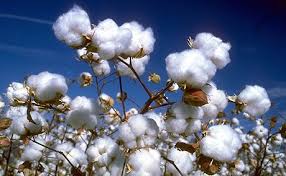Sajid Mahmood
Early cotton cultivation has commenced in Pakistan, typically from mid-February to March 31, with many cotton farmers initiating cultivation on their available lands. This trend is particularly notable in Punjab, where areas such as Multan, Sahiwal, Faisalabad, and Sargodha divisions are witnessing a rapid increase in early cultivation practices.
The Agriculture Secretary of South Punjab, Saqib Ali Ateel, has set a target of 200,000 acres for cotton cultivation in the Multan Division. To support this target, training programs for cotton farmers have been scheduled, along with plans for comprehensive monitoring of the cultivation process.
In Sindh, Munir Ahmad Jamani, the former Cotton Commissioner and current Director General of the Department of Agriculture Extension is actively involved in promoting early cotton cultivation. Lower Sindh, including areas like Thatta, Badin, Sajawal, Dhuronaru, Kanri, Tando Allahyar, and Tando Jam, as well as other coastal areas with moist air, offer ideal climatic conditions for cotton cultivation. Farmers in Sindh are showing great enthusiasm for early cotton planting due to these favorable conditions.
Based on information from multiple sources, it’s anticipated that Punjab will see 800,000 to 1,000,000 acres of early cotton cultivation this year, while Sindh aims for 1.5 million acres. Expected yields are between 30 to 35 maunds per acre in Punjab and 35 to 45 maunds per acre in Sindh. A previous newspaper article praised the benefits of early cotton cultivation, but in this article, we’ll delve into the challenges encountered and propose potential solutions.
According to experts from the Pathology Department of the Central Cotton Research Institute in Multan, farmers growing early cotton should utilize laser land levelers to prepare their land prior to planting. This not only conserves water and fertilizer by ensuring a smooth field but also prevents standing water, thus safeguarding the cotton crop from seedling diseases and other ailments. By comprehending the factors contributing to seed diseases and taking necessary precautions, farmers can mitigate potential issues and risks linked with early harvests and foster a robust cotton crop. Through employing appropriate inputs at the right time and embracing sustainable farming techniques, cotton farmers can enhance their earnings by improving production.
There is a risk of disease attack in early planted cotton which is also called Seedling Disease or Seedling Rot in English. This condition can be triggered by low temperatures, particularly cold temperatures, and excessive moisture in the soil. Under normal conditions, if the temperature ranges between 30 to 34 °C, cotton seeds will germinate within 6 to 7 days.
However, if the temperature falls between 24 to 29 °C, germination may take longer, increasing the likelihood of disease in the crop. Fungi and bacteria present in the soil, such as Rhizoctonia solani, Pythium, Fusarium, and other pathogens, are the primary causes of this disease. In this disease, the emerging young plants from the ground tend to wither and eventually die. The disease causes the roots of young cotton plants to rot, leading to wilting within a few days. Upon examination, dark-colored spots are visible on the roots of affected plants.
While plant diseases in our country are generally not severe and treatment is not typically recommended under normal circumstances, precautionary measures can be taken against this disease in early planting. Cotton farmers should consider using delinted seeds for cultivation or treating the seeds with a fungicide mixture of Mefenxam, fludioxinil, and azoxystrobin before planting.
This fungicide mixture should be applied at a rate of 2 to 3 ml per kg of seeds, mixed with 25 ml of water per kg of seed before application. This treatment helps protect the cotton crop from disease attacks during the initial 30 to 40 days of growth.
Early cotton varieties are susceptible to the initial onslaught of pink bollworms. Consequently, agricultural experts from the Central Cotton Research Institute, Multan, and field staff from the Department of Agriculture Extension in Punjab, stress the importance of meticulous off-season management practices for cotton. Additionally, efforts should be made to eradicate pink bollworms from waste in ginning factories. Failure to address these issues can lead to the carryover of pink bollworms from early cotton cultivation, posing increased risks of infestation for seasonal cotton crops typically grown in April and May.
As the early cotton crop progresses to the seedling stage and starts developing bolls, it’s crucial for cotton farmers to employ sex pheromone traps to deter pink bollworm infestations in their fields. Experts from the Department of Entomology at CCRI Multan advise using eight sex pheromone traps per acre for effective pink bollworm management. Additionally, they suggest utilizing one sex pheromone trap per five acres for observation or monitoring purposes to track pink bollworm activity. Growers employ cotton yellow sticky traps to safeguard young cotton crops from cotton whitefly infestations. Once the cotton plants reach a height of 6 inches, it’s crucial to position yellow sticky colored boxes throughout the field.
As the cotton plants continue to grow, the placement of these boxes should be adjusted to match the height of the plants. The potent adhesive on the yellow traps ensnares whiteflies, effectively eliminating them without the need for spraying pesticides. These traps should be strategically placed around the perimeter and within the central area of the cotton crop. It is recommended to deploy yellow sticky traps at a rate of 10 per acre.
The American bollworm is a threat to early cotton planting, as it can infest a variety of host plants such as potato, tomato, okra, carrot, corn, wheat, millet, and bersem, potentially shifting its focus from these plants to early cotton crops. But today, with the increasing cultivation of Bt cotton varieties across larger areas, the American bollworm is no longer a significant threat to cotton crops. However, concerns persist about its potential impact on early cotton crop. Before early planting, cotton farmers should adequately prepare the land by utilizing chisel plows to break up the compacted topsoil.
This process enhances the soil’s water retention capacity, enabling the plant roots to penetrate deeper into the soil to access nutrients effectively. Based on observations from last year, it’s clear that single, double, and triple gene varieties of cotton are effective for early cultivation, potentially yielding 40 maund per acre with proper management. To optimize early cotton yields, it’s crucial for farmers to stick to approved varieties, as advised by institutions like the Central Cotton Research Institute Multan and the Punjab Agriculture Department.
Unapproved varieties are more prone to attacks by harmful insects and diseases, leading to reduced yields. Some approved varieties for planting between mid-February and March 31 include BTCIM775, BTCIM343, BTCIM663, BTCYTO537, BTCYTO511, FH333, Hataf3, CKK1, CKK3, CKK5, CKK6, Ghori 2, Badr 1, ICI 2121, and ICI 2424.







